Have you ever walked into an international supermarket, whether it’s Jamaican, Chinese or a Korean grocery, and saw some items that made you thought, “WTF are these?!” Well, I have. You will often find mysterious canned packages with a foreign language all over them and vegetables that you have never even heard of in the store.
As a proud Korean myself, I am here to break that fear for you, at least about Korean cuisine. Let me walk you through these terrifying, bizarre food items that you will encounter at any Korean grocery store. I will even tell you how you can eat and enjoy them in a way they are meant to be served. Let me be Bizzare Foods’ Host, Andrew Zimmern right now.
1. Gosari (Fernbrake)
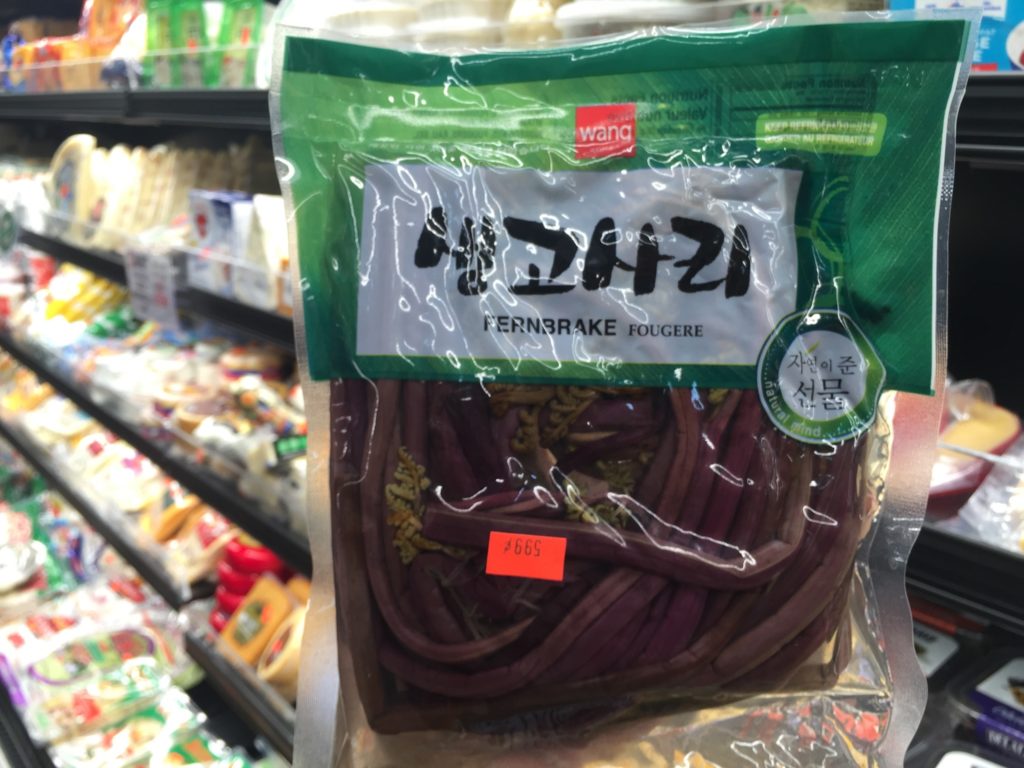
Photo by James Park
Your first impression of this brown, unpleasant-looking item could be either “how do Korean people eat that?” or “I will never eat those.” Well, first of all, this is DELICIOUS and you probably have eaten it before whether you knew it or not.
You will often find these in a popular Korean dish, called Japchae, stir-fried sweet potato noodles with mixed vegetables, or bibimbap, a Korean vegetable rice bowl. I refuse to eat bibimbap without this. It is amazing if you saute this with a little bit of soy sauce and sesame oil. I love its chewy texture, and it is one of my favorite Korean side dishes.
2. Yeongeun (Lotus Root)
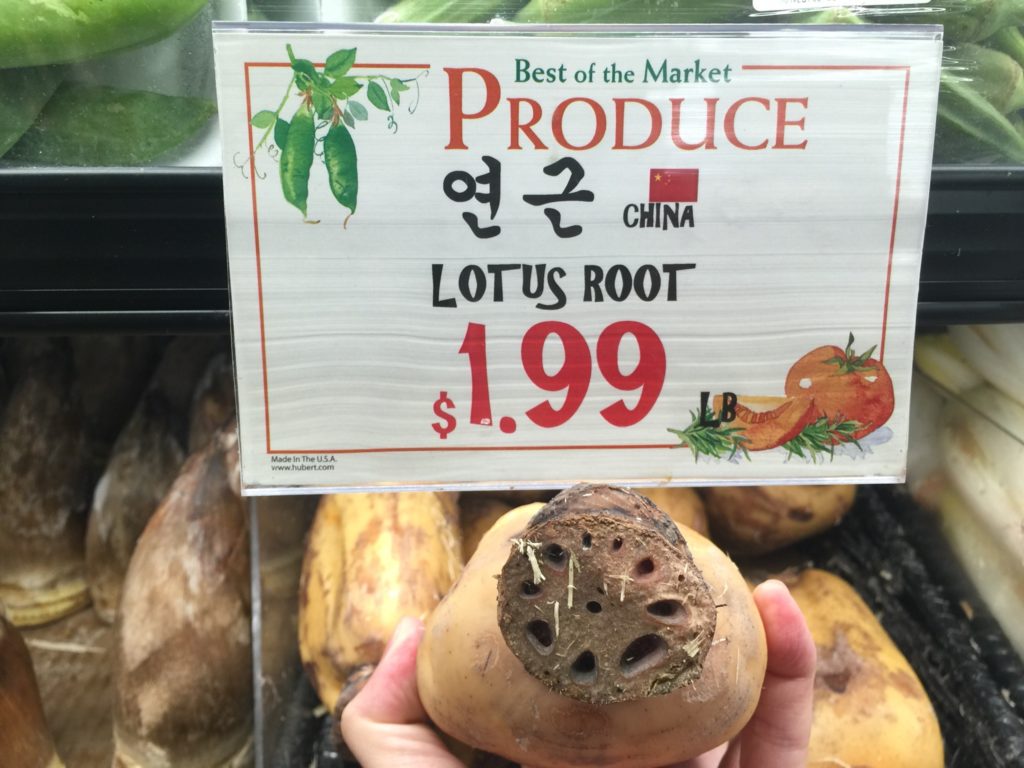
Photo by James Park
This is all for my veggie-loving, vegan peeps out there. You can’t have this unless it is cooked (sorry for raw-eaters), but once it is cooked, it becomes super tender. Its slightly bitter flavor goes well with kimbap, a Korean veggie roll, and it is delicious as a tempura. My favorite way to enjoy this beauty is when it’s cooked with soy sauce, miring (sweet rice wine), and sesame oil, AKA the holy trinity of the most Asian cuisine.
3. Kalguksu Myun (Fresh Oriental Style Pasta)
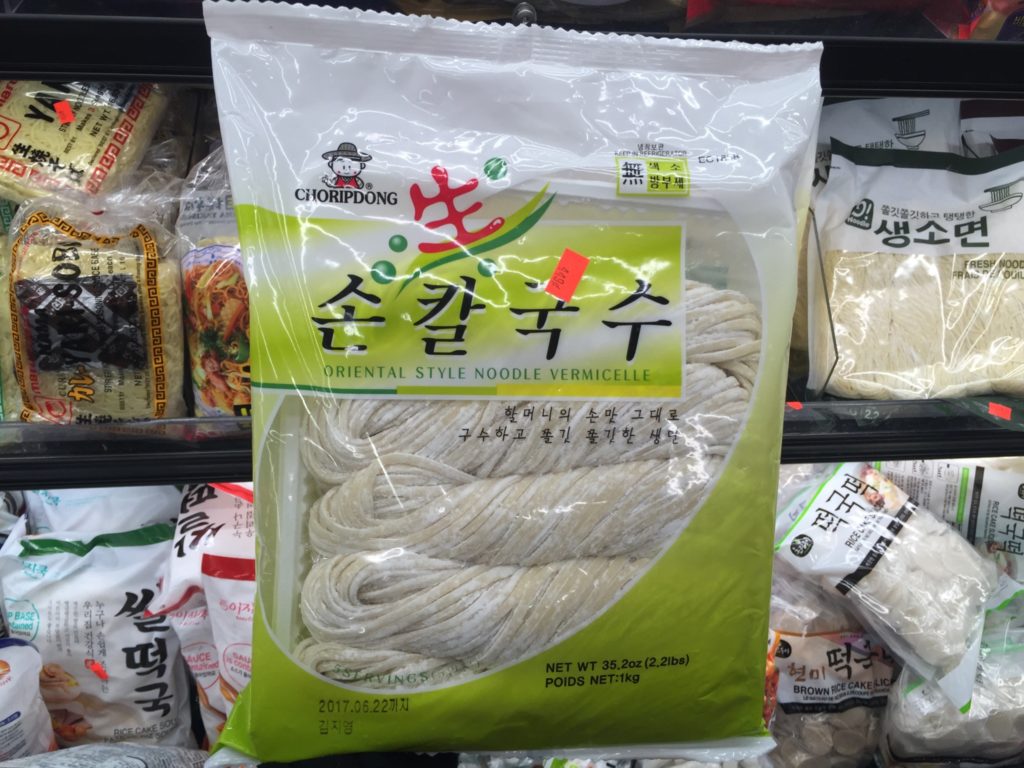
Photo by James Park
This may not be your traditional Italian pasta, but it is as delicious as your typical go-to fusilli. These noodles are one of the key ingredients of some of my favorite Korean dishes, such as Jajangmyeon, a Korean-Chinese noodle dish with a thick black bean sauce, and Kalguksu, a noodle soup with rich broth and vegetables.
4. Jjukkumi (Blanched Baby Octopus)
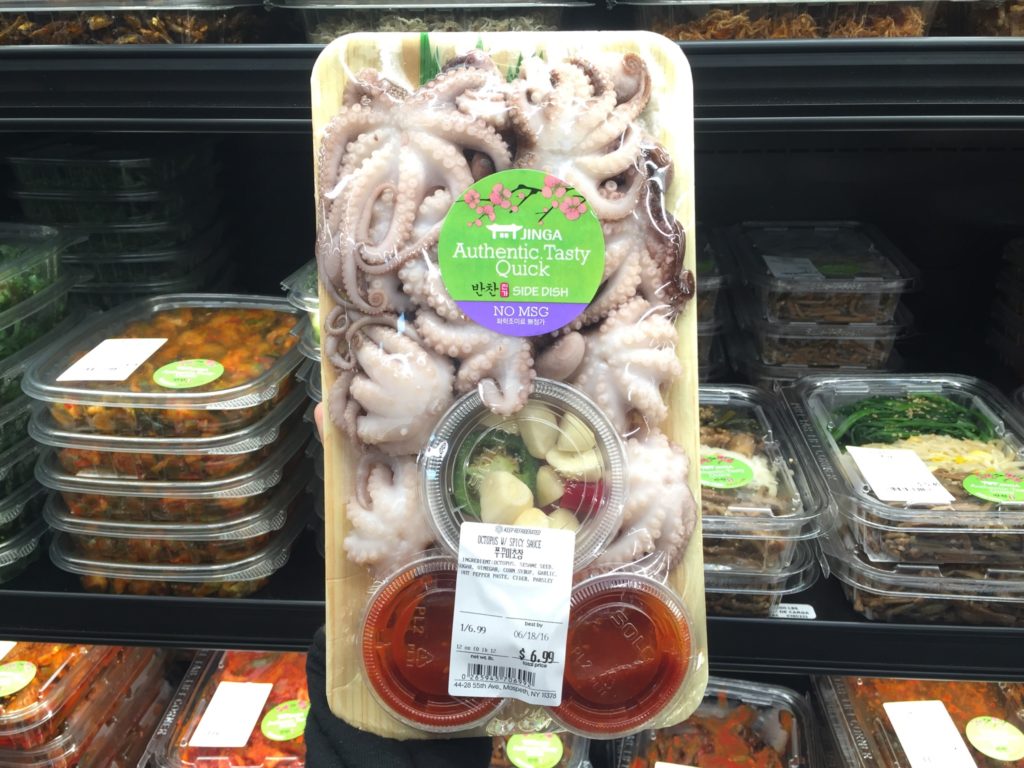
Photo by James Park
I hope these did not give you a heart attack because they are one of the most loved side dishes in Korea, especially when drinking soju, Korea’s most popular alcoholic beverage. Its chewy, mild flavor goes wonderful with citrus, spicy sauce, called cho-jang. When you are hanging out with your Korean homies drinking soju, have some of these. Now, that’s a party.
5. Sannakji (Seasoned Live Octopus)
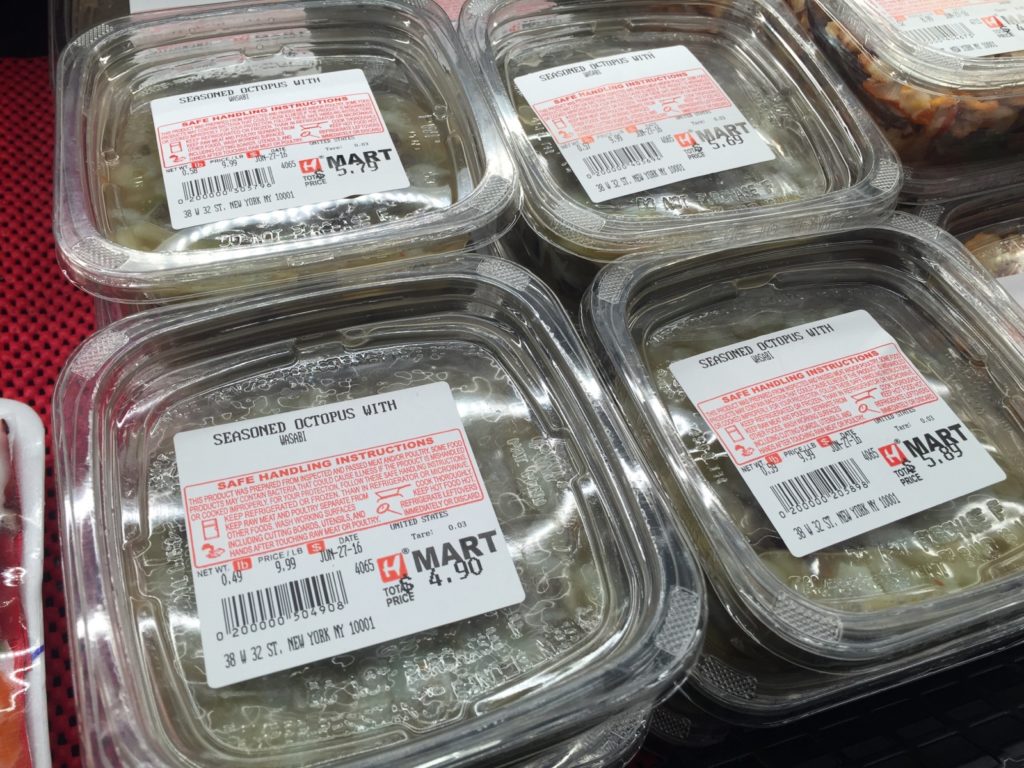
Photo by James Park
In the popular Korean movie “Old Boy,” there is an iconic scene where the actor eats a whole live octopus, wrapped around the chopsticks. Well, you can basically recreate the scene with this without being chocked to death. It is slightly seasoned with salt and sesame oil, and you can really taste the sea. I personally love its silky, chewy texture, and I used to eat so much of these as a child. Don’t worry, they are not live.
6. Godeungeo (Fresh Mackerel)
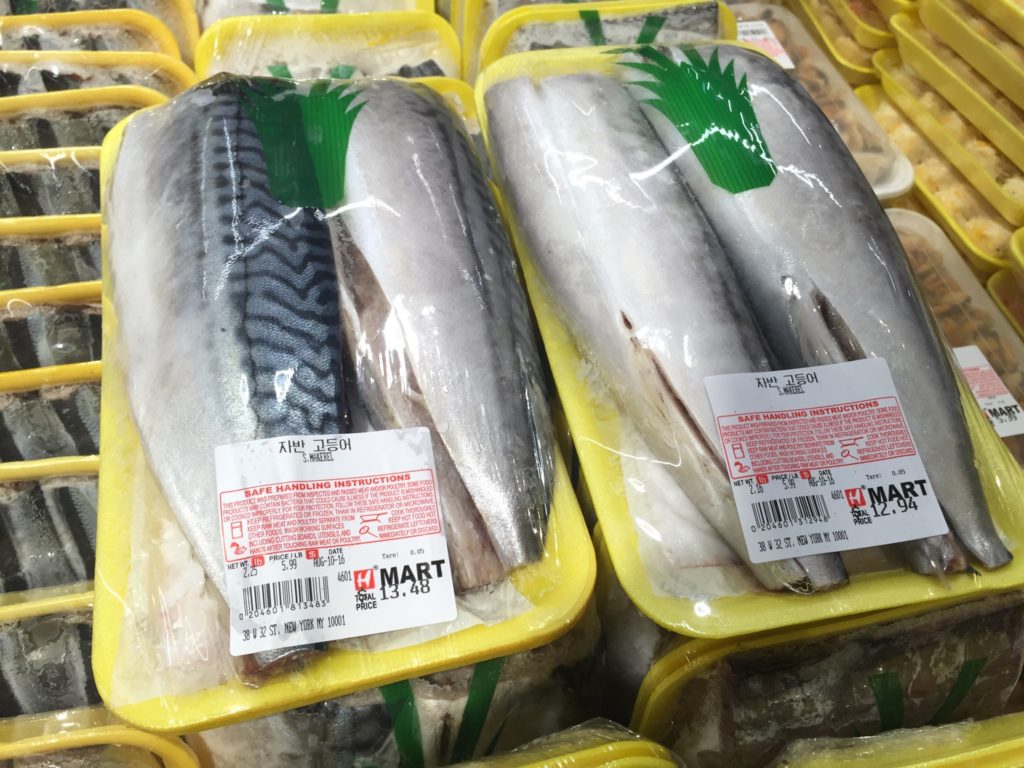
Photo by James Park
I am not sure how many of you guys have actually seen fresh mackerel, but it is one of the most beloved fish in Korea. I love how meaty this fish is, and it is still my favorite fish to eat (I’m sorry, salmon). My favorite way to prepare this fish is pan-fried. The meat gets salty and delicious, and its crispy skin is a dynamite. It also makes a fantastic addition to Kimchi stew.
7. Dakbal (Chicken Feet)
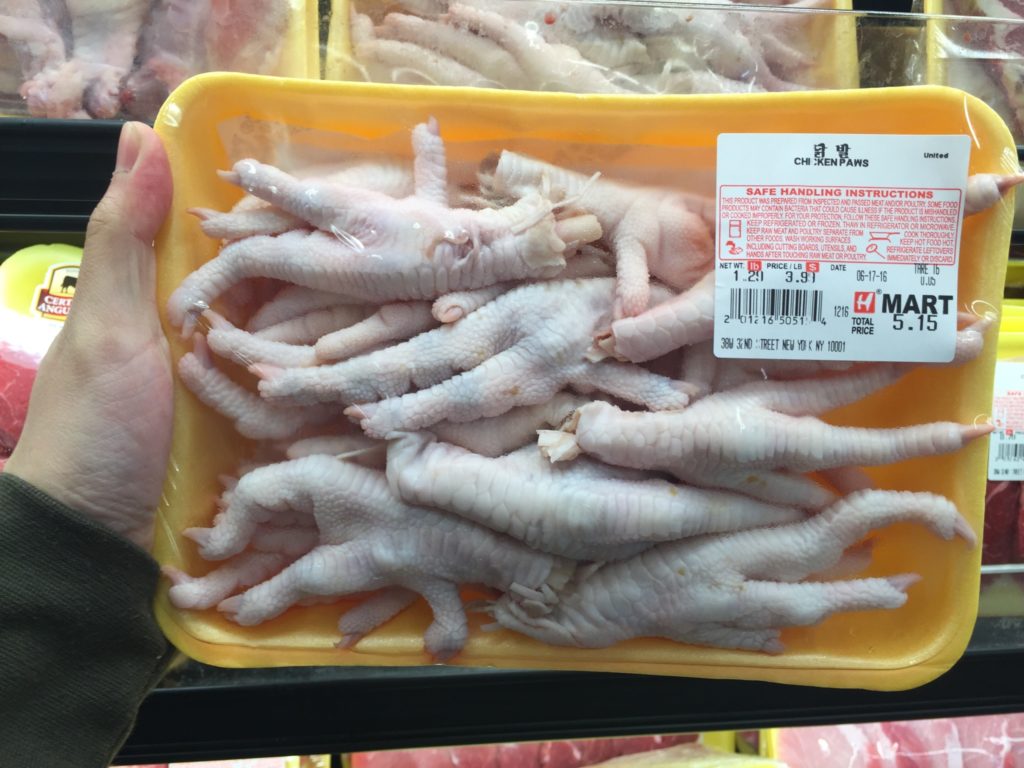
Photo by James Park
There are two types of people in Korea: people who love chicken feet and people who hate chicken feet. I happen to be the chicken-feet lover. I know this might look really gross to you, but let me tell you, when it is sauteed with salty, spicy sauce, it is the most delicious thing in the world. We call this dish as “dakbal.” I know that their toe nails are ON FLEEK and scary, but once you get the hang of it, nothing can stop you eating this.
8. Deboned Chicken Feet
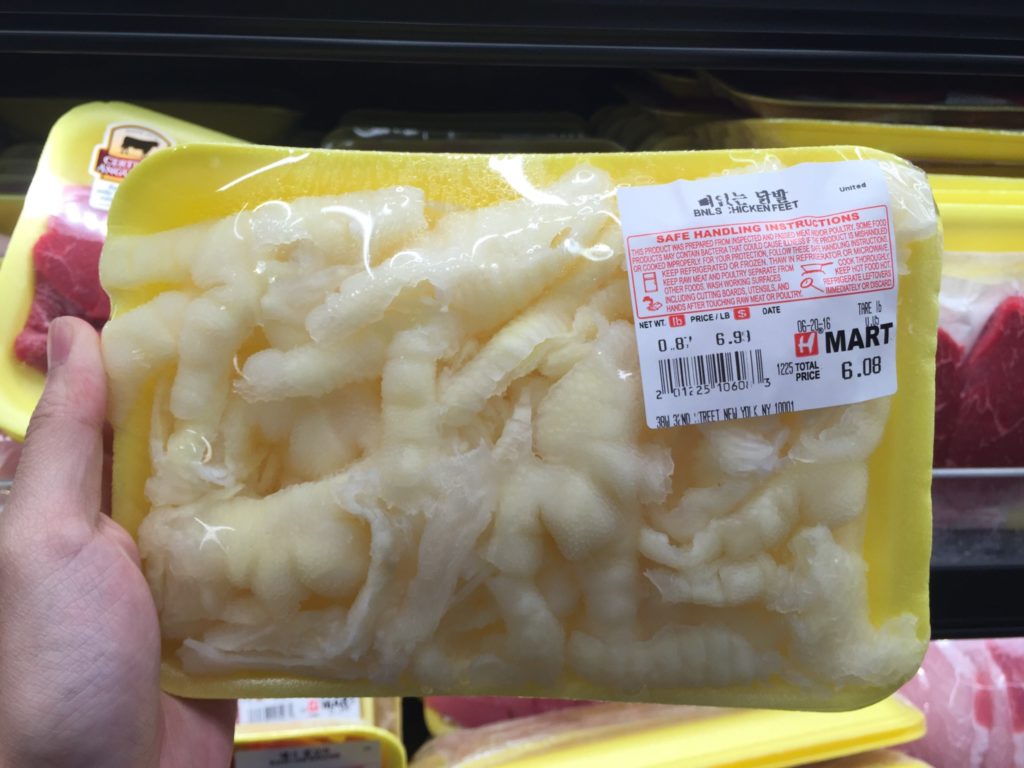
Photo by James Park
If the chicken feet’s toenails are the deal breaker for you to try them, I have a good news! You can enjoy “dakbal” without having any toenails. It’s like enjoying crawfish without going through the hassle of digging out the meat. It’s kinda genius.
9. Dwaeji Kkeop Degi (Pigskin)
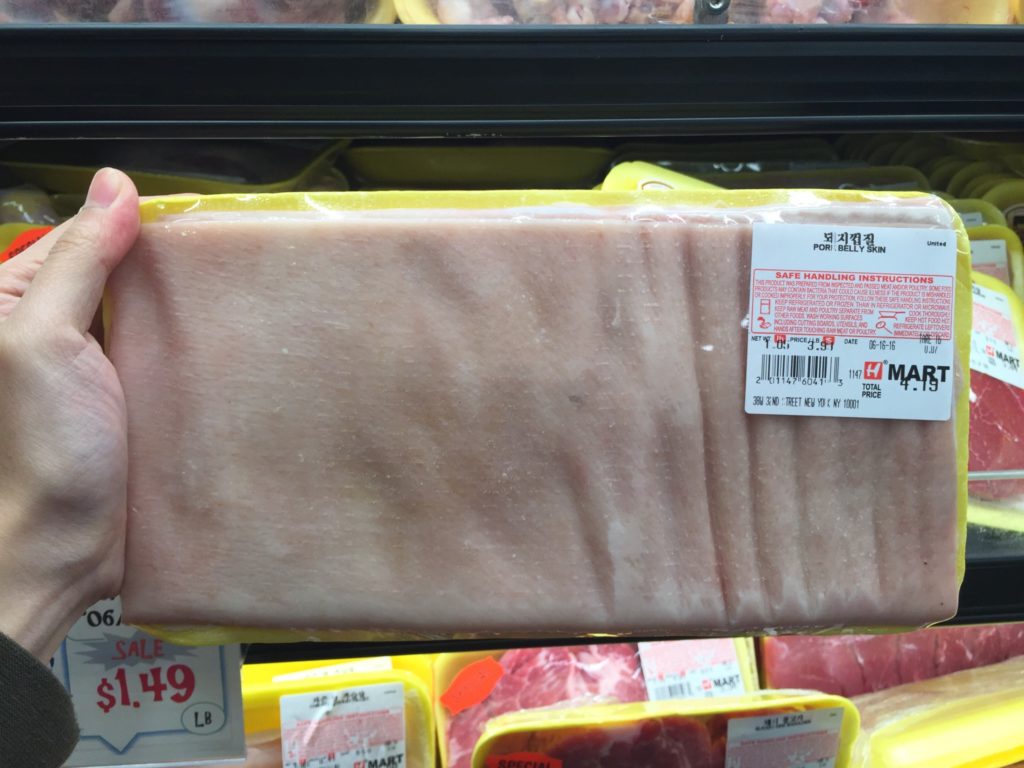
Photo by James Park
You might be familiar with this as pork grinds or chicharron, fried pigskin. It is full of collagen, which is super good for your hair and skin, and it is high on protein and low on carbs. My favorite way to enjoy this is simply grilled with some salt. The more you chew, the more flavor you get with this. It is also amazing when it is braised with soy sauce and sesame oil.
10. Dak-ttong-jip (Chicken Gizzards)
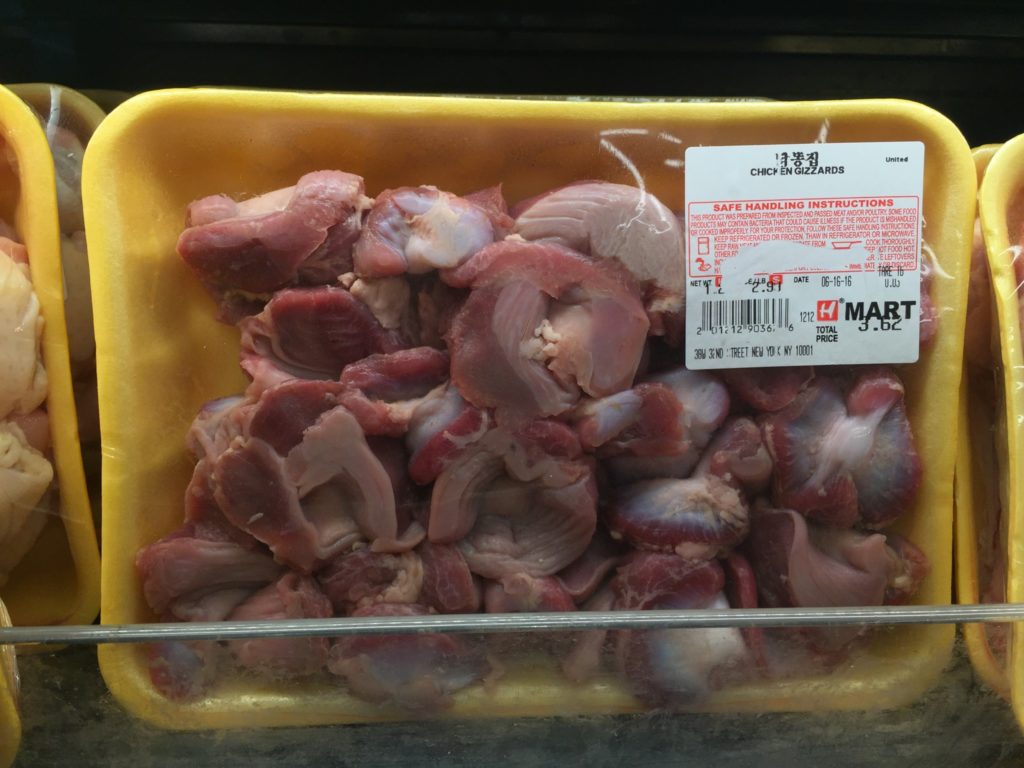
Photo by James Park
This is another thing that validates my theory that there is NOTHING to throw away in the chicken. This is more loved by my parents’ generation than my generation in Korea because of its obvious reason, but when I gave it a try, I was pleasantly surprised by its delicious flavor. The texture is very similar to chicken liver, so if you are a fan of chicken liver, you should give it a try.
11. Yeon-eo Meo-ri (Salmon Head)
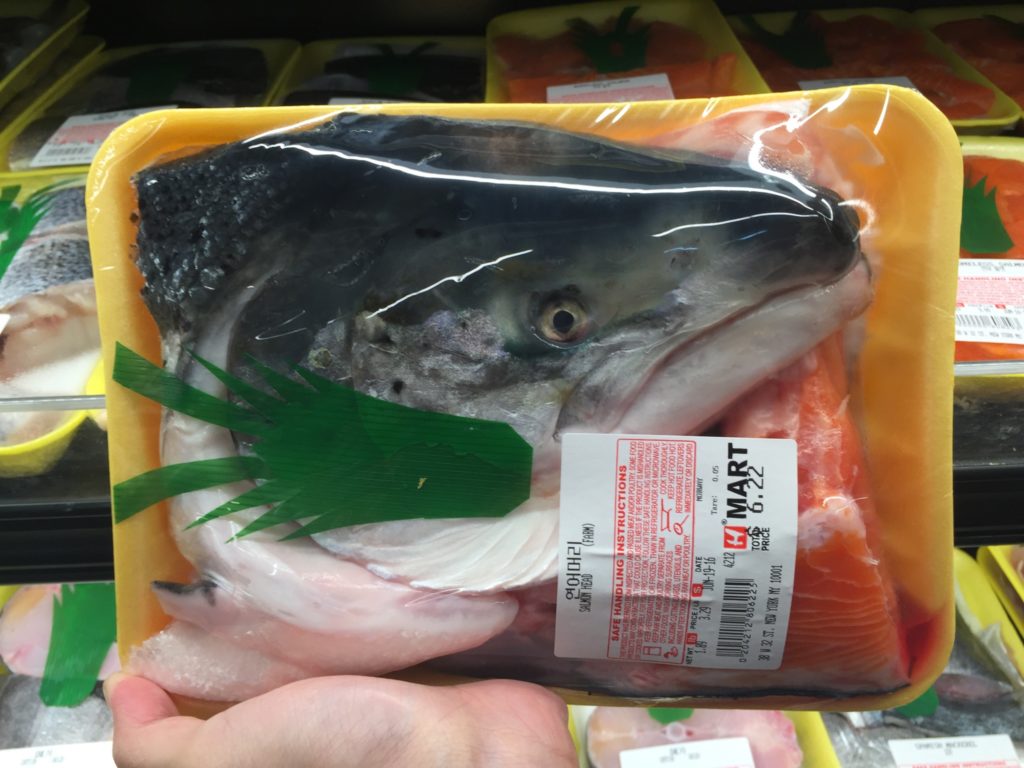
Photo by James Park
I have to say, when I found this item at the store, I even said, “OMG.” But, I quickly realized that fish head makes delicious stock and it is crucial to make any Korean fish stew. I recommend enjoying this either by making scrumptious fish stock or grilling. There is so much hidden meat inside the head that you will not want to miss.
12. Sogogi Gop-chang (Beef Intestines)
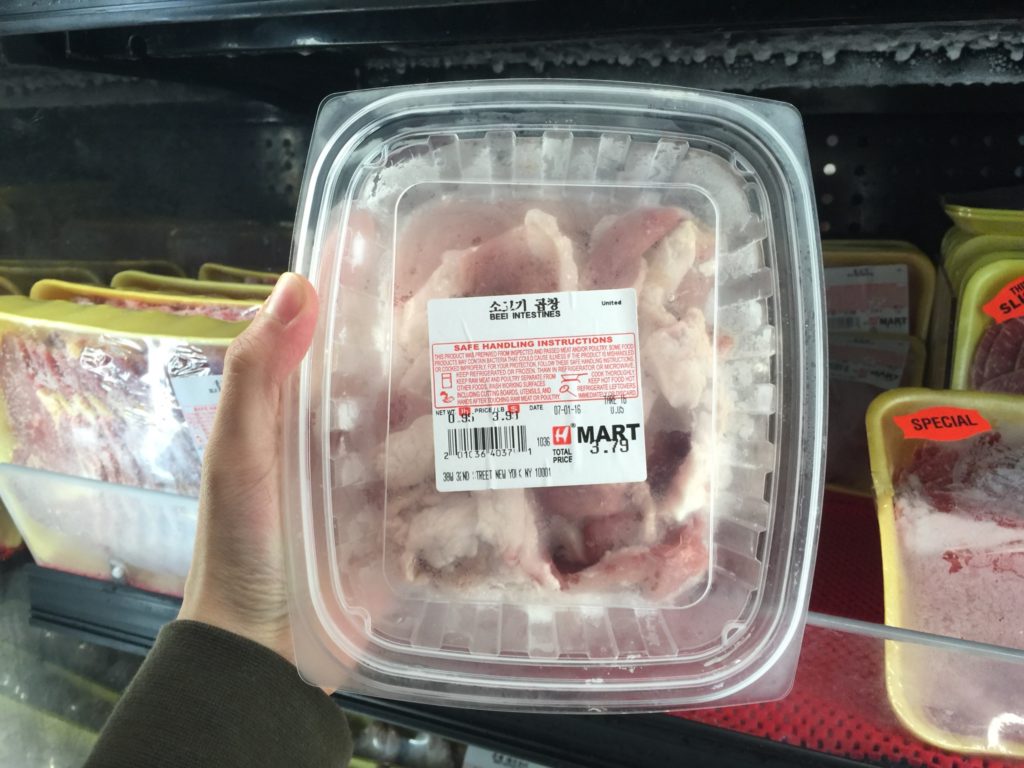
Photo by James Park
I am here to break the stigma against intestines. Beef intestines is one of my favorites to eat, and I always make sure to pig out when I go back to Korea. It is usually served grilled, either marinated or simply salted, and it is amazing to eat with soju. There are a lot of preparations to clean the intestines properly, so don’t worry about its smell or cleanliness. You have to try this at least once before you die. It is so worth it.
13. Jeot-gal (Pickled Seafood)
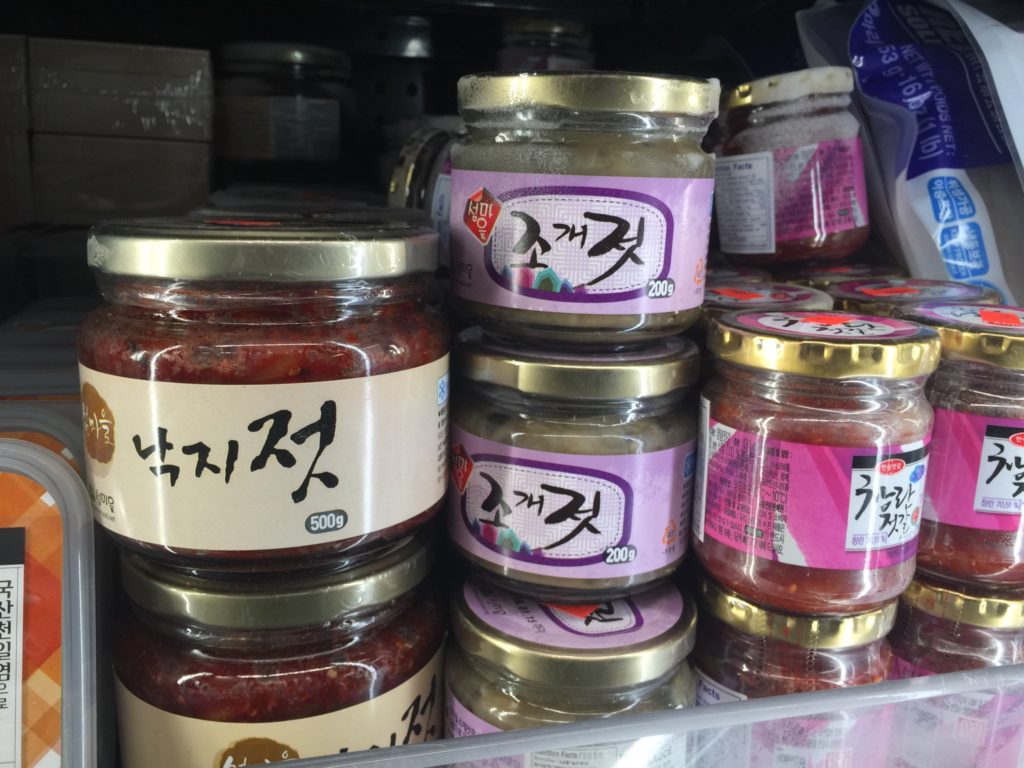
Photo by James Park
One of the beautiful things about Korean cuisine is its fermentation of ingredients, and this, what we call “Jeotgal,” is another way to preserve the freshness and flavor of seafood by fermenting. It is heavily salted with red pepper flakes and other ingredients and it gets better as it ages. You can make jeotgal with octopus, squid, shrimp, and even fish intestines. Its spicy and salty flavor goes perfectly with steamed white rice.
14. Myeol-chi (Dried Anchovies)
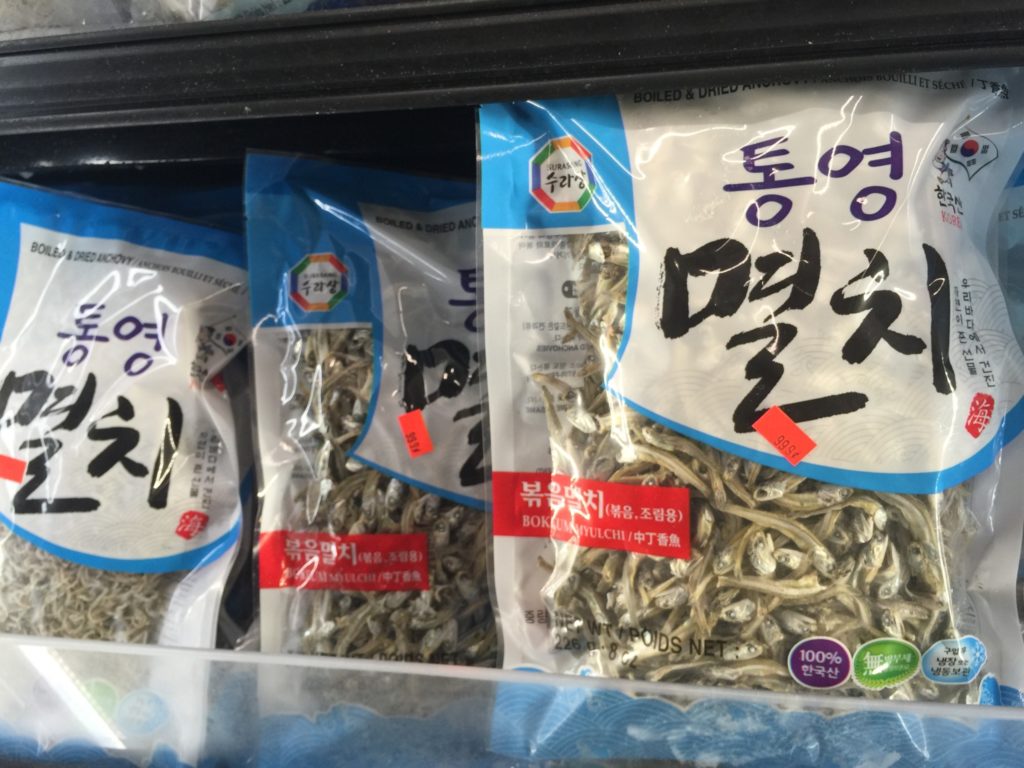
Photo by James Park
This is a MUST item if you want to be serious with Korean cuisine. The traditional Korean stock, so-called “dash,” made with dried anchovies, dried kelp, and dried shiitake mushroom is fundamental for any Korean soups. You can even saute this with soy sauce and corn syrup to make a delicious side dish.
15. Dasida (Instant Stock Seasoning)

Photo by James Park
If you are too busy to make that authentic Korean stock, this is a way to go. Using this, you can turn the biggest disaster to somewhat edible soup. Some Koreans call this magic powder. This instant broth seasoning will help you create some of your favorite Korean soups instantly. It has a variety of flavors: beef, dried anchovies, and clam. Get creative with this.
16. All Kinds of Ramen
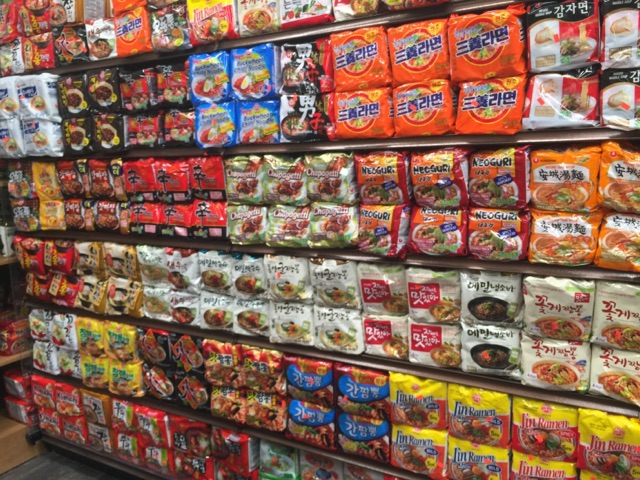
Photo by James Park
Are you sick of your boring, artificial, cheap cup ramen noodle? We got your back. According to this statistics, a South Korean will consume 76 packages or 20 pounds of instant ramen in a year. That’s nearly one ramen in every five days. It is not a joke when I say Koreans are SERIOUS about their ramen noodles. There are hundreds of different ramen noodles to choose, so get lost in the world of Korean ramen. My all-time favorites are Shin ramun, Neoguri seafood ramen, and Jin Ramen. Thank me later.
17. All Kinds of Kimchi
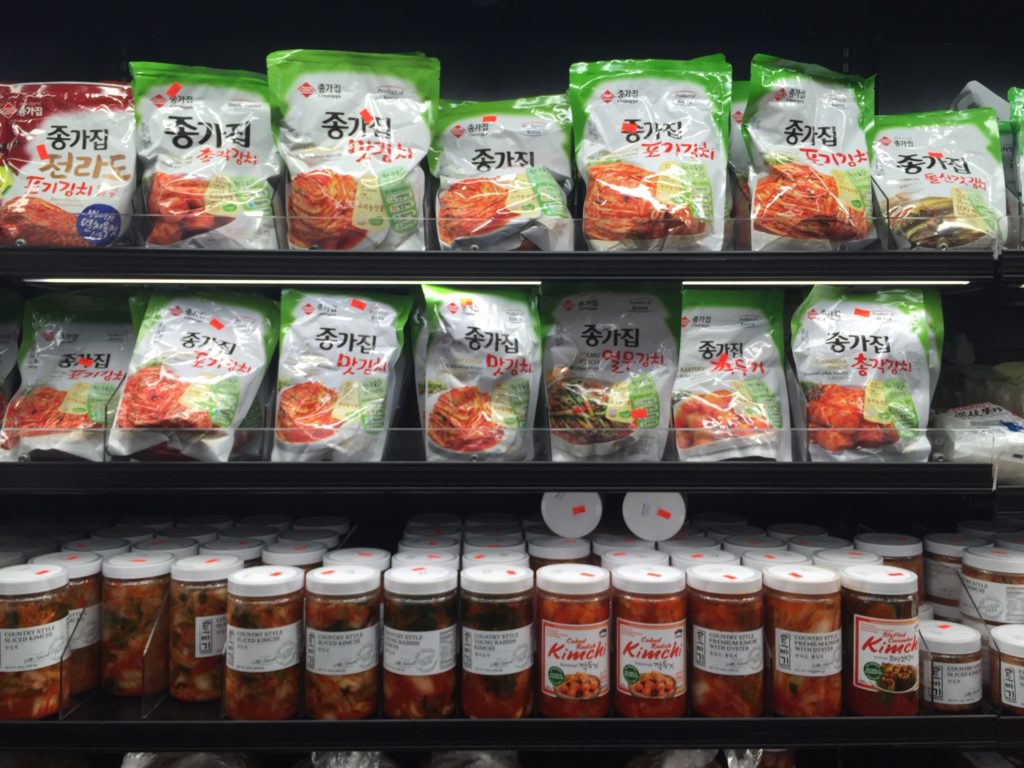
Photo by James Park
I can’t talk about Korean cuisine without mentioning Kimchi. On top of traditional Kimchi we all know that is made with napa cabbage, there are other kinds as well, such as, Kkakdugi, cubed radish Kimchi, and Chonggak Kimchi, ponytail radish Kimchi. It also tastes completely different when it is fermented for years. Taste Korean culture by trying different Kimchi.


